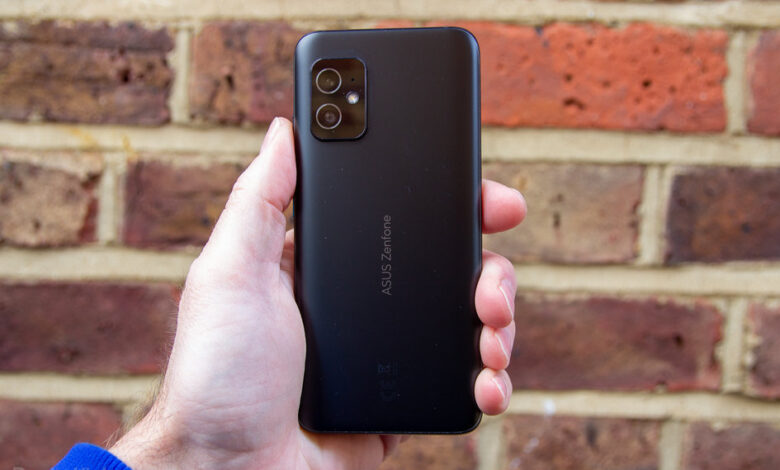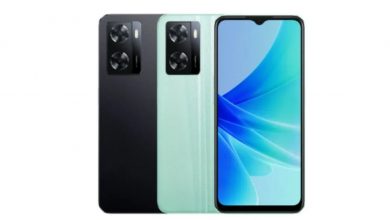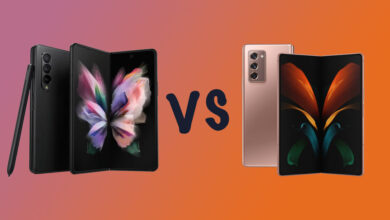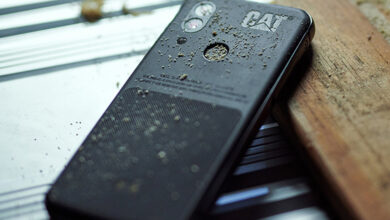Asus Zenfone 8 review: Hot little number

[ad_1]
(Pocket-lint) – Asus is taking a different path to most of the Android smartphone space with the Zenfone 8. Rather than making a huge phone, packing it with tech and asking you to pay loads of money for it, it has gone compact.
The Zenfone 8 joins the likes of the Sony Xperia 5 II in offering flagship hardware in a compact form and is, as such, something of a rarity in modern smartphones.
Design and build
- Dimensions: 148 x 68.5 x 8.9mm / Weight: 169g
- Metal frame, Gorilla Glass Victus front and back
- IP65/68 water protection
The move to a more compact model might be attractive to those fed up with having to buy a big phone to get the latest hardware.
Indeed, it’s immediately attractive to those wanting a phone that’s more pocketable, and slipping this into a jersey pocket when heading out cycling is a real pleasure: there’s no feeling that it’s going to jump out of your pocket when you hit a bump as there is with larger, heavier, devices.
The fact that it also offers IP65/68 protection gives it more rounded appeal for outdoorsy types who might not want to be carrying a huge slab of a phone in their pocket when out walking the hills or running, for example. Rain, sweat and a dunk in a puddle is no problem for this little device.
With a metal frame and Gorilla Glass Victus both front and back there’s some protection from scratches too, with a luscious matte frosted finish to the rear that feels great and avoids the worst of the fingerprints. However, the design isn’t the most eye-catching, it’s just a little boring to look at. There’s a hard case in the box to provide protection, but it’s not the most grippy.
The whole Zenfone 8 aim is to be better suited to single-handed use and that’s certainly achieved, while Asus has also included a 3.5mm headphone socket alongside stereo speakers, so there’s a feeling that not too much has been compromised in going small.
That means this is a great package for those wanting a compact phone, but we do wonder how many people out there want a compact flagship phone. Apple has reportedly not had a storming success with the iPhone 12 mini (although rumours can’t always been believed), while buyer demand has been for larger devices – which is why the market is dominated as such.

One interesting detail in the Zenfone 8 is that Asus has included an LED next to the USB-C port. This serves as a notification light, illuminating when you connect to a charger and so on.
Asus also has a neat trick with the front camera, as when it’s active, what looks like a green LED illuminates next to it – it’s actually just a green dot on the display, but serves the same purpose as LEDs on webcams and so on.
Display and speakers
- 5.9-inch AMOLED, 2400 x 1080 resolution (446ppi), 120Hz refresh
- Stereo speakers, 3.5mm headphone port
Having a smaller display increases the reachability around the device. That’s an immediate benefit for anyone who struggles with larger devices and you’re much more likely to be able to reach all the areas of this device that need interaction.
Measuring 5.9-inches on the diagonal, this is smaller than the Xperia 5 II, but remember that Sony’s phones have a 21:9 aspect ratio, leading to a taller phone. Indeed, Asus’ play here is to be the more compact device. But not too small; it’s larger than the iPhone 12 mini.

The resolution and quality of the display isn’t affected, however. It’s a Samsung AMOLED panel, full of vibrancy and perfectly capable, with Full HD+ resolution cramming in the details There’s decent brightness to cut through in bright sunshine too.
It’s also a 120Hz capable panel, with options to have that refresh rate on automatic or to force it to 60Hz/90Hz/120Hz. The results are great overall, keeping animations smooth.
But it is a small display and there are compromises that come with it. The keyboard is more compressed which needs to be considered. This size of device isn’t as immersive as larger displays: for those interested in gaming or media consumption that might also be a consideration, because the experience just isn’t as good.
With media consumption in mind, the inclusion of a 3.5mm headphone socket is great for those still using wired headphones, meaning you don’t need a dongle – and with many manufacturers saying that don’t have the space, Asus is showing it can happen.

Then we come to the speakers. Many small phones scrimp in this area, but the stereo offering here fits with the position of this as a flagship device – something that Sony also offers on its Xperia devices. The Zenfone 8’s speaker on the base does most of the heavy lifting when it comes to bass, but it’s easier to cover than front-firing speakers, so you can lose some of that richness when playing games.
Asus says these speakers are close to those offered on the ROG Phone 5. Technically that might be true, but they are a world apart on performance due to how they have been implemented here. Still, if you spend your time watching Instagram Reels in portrait, you’ll be perfectly fine.
Hardware and performance
- Qualcomm Snapdragon 888 5G
- Up to 16GB RAM, 256GB storage
- 4000mAh battery, 30W Hypercharge
Positioned as a flagship device, it’s no surprise to find that the Asus Zenfone 8 has a Qualcomm Snapdragon 888 at its heart. That means integrated 5G connectivity and power to match the best devices of 2021.
There will be a number of different variants of the phone – subject to regions – with RAM up to 16GB and storage up to 256GB. There’s no option for microSD card expansion, but there are dual SIM slots.
With a flagship hardware loadout, it’s a flagship experience you get. Everything is refreshingly fast for a compact device, little different to the top phones out there, especially in day-to-day use.

The Zenfone 8 does suffer for its size, however, when it comes to cooling (or, rather more, heating). One of the changes to pack in all the functionality of this phone has been a redesign of the printed circuit boards inside – and cooling seems to have been sacrificed in the process. We could feel a considerable warming of the phone when playing demanding games, like Call of Duty Mobile, with the top half of the phone getting uncomfortably warm.
While flagship games run smoothly, albeit accompanied by that heat, we do wonder if serious mobile gamers would choose a phone like this. Again, the compact size means the experience just isn’t as good as devices with a larger display and more space for screen interaction.
The battery life also isn’t huge: there’s some limitation that comes from having a 4,000mAh battery and while that’s still enough to get you through the day, we’ve seen better endurance from those devices with bigger batteries recently. It seems that having a smaller display here isn’t saving a huge amount in battery expenditure.
There are power modes you can deploy, with the ability to customise things to your preferences – perhaps turning down the screen brightness and refresh rate while allowing background data, for example – but the overriding feeling we get is that the battery life isn’t as good as we’d expect.

However, the 30W charger in the box is welcomed, with that HyperCharge powering the Zenfone 8 back up really quickly. There’s no wireless charging, however.
There’s an under-display fingerprint scanner and we’ve found this to be pretty troublesome. It often fails to unlock or reports that the sensor is dirty. We’ve even found it struggling to complete the fingerprint registering process, because it won’t progress any further. We’ve often defaulted to unlocking via another method, so this isn’t ideal.
Cameras
- Dual rear camera system:
- Main: 64-megapixel, f/1.8 aperture, Sony IMX686 sensor (0.8μm pixel size)
- Ultra-wide: 12MP, f/2.2, Sony IMX363 (1.4μm)
- Front-facing selfie camera:
- 12-megapixel, Sony IMX663 sensor (1.22μm pixel size)
Asus has avoided gimmicks on the Zenfone 8 and that’s noteworthy. Many other manufacturers would have piled in a collection of trash cameras with depth sensors and macro sensors so they could put “quad camera” on the spec sheet. Not so here.
Instead Asus has gone with a 64-megapixel main rear camera, using pixel binning to take it from its native 0.8μm pixel size to 1.6μm, with 16-megapixel photos as standard. You can access the 64-megapixel mode if you want to, but Asus also uses this for crop zooming as there’s no optical zoom lens.
When zooming, you have the option to jump to 2x (digitally), but beyond that you have to pinch-zoom across the scale up to 8x. You can see the optical image stabilisation working hard here, trying to counter your hand movements by the slight delay in what you see on the screen. The results are standard digital zoom. Far-off objects end up with a fairly ‘mushy’ result – so it can’t compete with modern optical zoom lenses.
0.6X OPTICAL ZOOM
However, the main camera is pretty good. It gives natural results, tackling HDR (high dynamic range) scenes fairly well, sometimes over-exposing when things get a little bright, but otherwise being perfectly capable.
When shooting in low light, the camera will default to a night mode, taking 4 second exposures and slowly developing the image on the screen. This is great for still subjects in low-light conditions, but it’s not as capable in very dark conditions as you’ll find on the Google Pixel, for example. Taking a photo of a painting in a gloomy room and you’ll get a good result and that’s more likely to meet demands than turning night to day outdoors though.
One of the reasons for a higher-resolution sensor is to enable 8K/24fps video, on top of the 4K at 30 or 60fps. Both offer electronic stabilisation, with 1080p recording getting HyperSteady for even better results. Slow motion is offered up to 120fps in 4K, with 480fps for 720p video.
The ultra-wide camera is also pretty good. It gives a creative option that’s popular, giving that 0.6x view and avoiding too much of the blurring towards the edges that some cheap wide-angle lenses suffer from. It’s also pretty consistent in colour with the regular lens, which is fairly rare – so good job Asus. It’s poor in low-light conditions though, so best avoided in the dark.
The front camera is a 12-megapixel sensor and we’re glad that Asus has avoided the temptation to throw in a higher-resolution sensor for no benefit. It’s autofocus capable, which keeps things sharp, and we’ve found the performance to be pretty good.
It offers a portrait mode to blue the background using software smarts, but this tends to blur the background while overexposing – and we don’t really like the results you end up with as the edge detection isn’t the best. The best results are likely to come from not using it, really. It’s also not very adept in low-light conditions, not getting the longer night mode exposures, so low-light selfies are weak.
Overall it’s a comprehensive camera offering and most are likely to find they have pretty much everything they want from it. The biggest omission is the zoom camera – and with Sony offering a new dual focal length optical telephoto on the Xperia 5 III, it’s something that Asus obviously misses compared to its closest rival.
Software
The Zenfone 8 comes pretty free from clutter and bloatware. You’ll find it using Google services as standard, with Google Discover accessible from the home page and Gboard as the default keyboard. That’s a great starting point as there’s very little to unpick to get going with this phone.
Asus does offer its own Gallery and Weather apps, but that’s about it, quite the change from Asus devices just a few years ago.
But there’s more weaved into the background. You’ll find Game Genie – the same system that the ROG Phone 5 uses – to boost your gaming experience, AudioWizard to tune the sound output to your preference, integrated battery modes that are customisable, and charging management to opt for slower charging or scheduled charging as appropriate.

Then you’ll find a range of options in the Advanced menu to do things like controlling what the side key does, speed up launching of some apps, or to control the one-handed mode.
The need for one-handed mode does raise some questions, because a lot has changed in recent years to support those using larger phones. Navigation, for starters, often allows the back gesture to go back in an app, rather than tapping an arrow in the top left-hand corner (which is just bad app design), while this is actually a small handset, so one-handed mode is largely unnecessary.
Still, once it’s activated, you can swipe down on the very bottom of the screen and have the whole lot drop down so the top of the page is within reach. We actually find it more awkward to perform that bottom swipe than to access the top of the display anyway, so it feels a bit lost.
But overall, there’s little to complain about from the software experience. It’s a great Android phone feeling and it doesn’t seem to have been insensitively messed around with too much.
There’s a lot to like from the Asus Zenfone 8. It’s a nice compact phone, it has plenty of power, and it offers a great experience for those who want something smaller. It’s lighter on the pocket and lighter on the wallet too.
The camera is a good performer, accepting that there’s no zoom, while the audio offering is pretty good, alongside software that’s unfussy and puts Google’s Android first.
But the rapid heating under load outlines that this phone won’t work for some people, like gamers, while the inconsistent fingerprint scanner provides an easy point of irritation.
That means there’s a healthy balance of pros and cons – and some might want to see how Sony’s compact phone performs before committing to the Zenfone 8.
Also consider

Sony Xperia 5 II
Sony is one of the few manufacturers offering a compact flagship phone. The 2020 Xperia 5 II is widely available and a great performer, packing a lot into its body to keep you entertained. It’s now not as powerful as the Zenfone 8 because of older hardware, but you might find it suits your needs better.
squirrel_widget_2680362
Writing by Chris Hall.
[ad_2]
Source link






